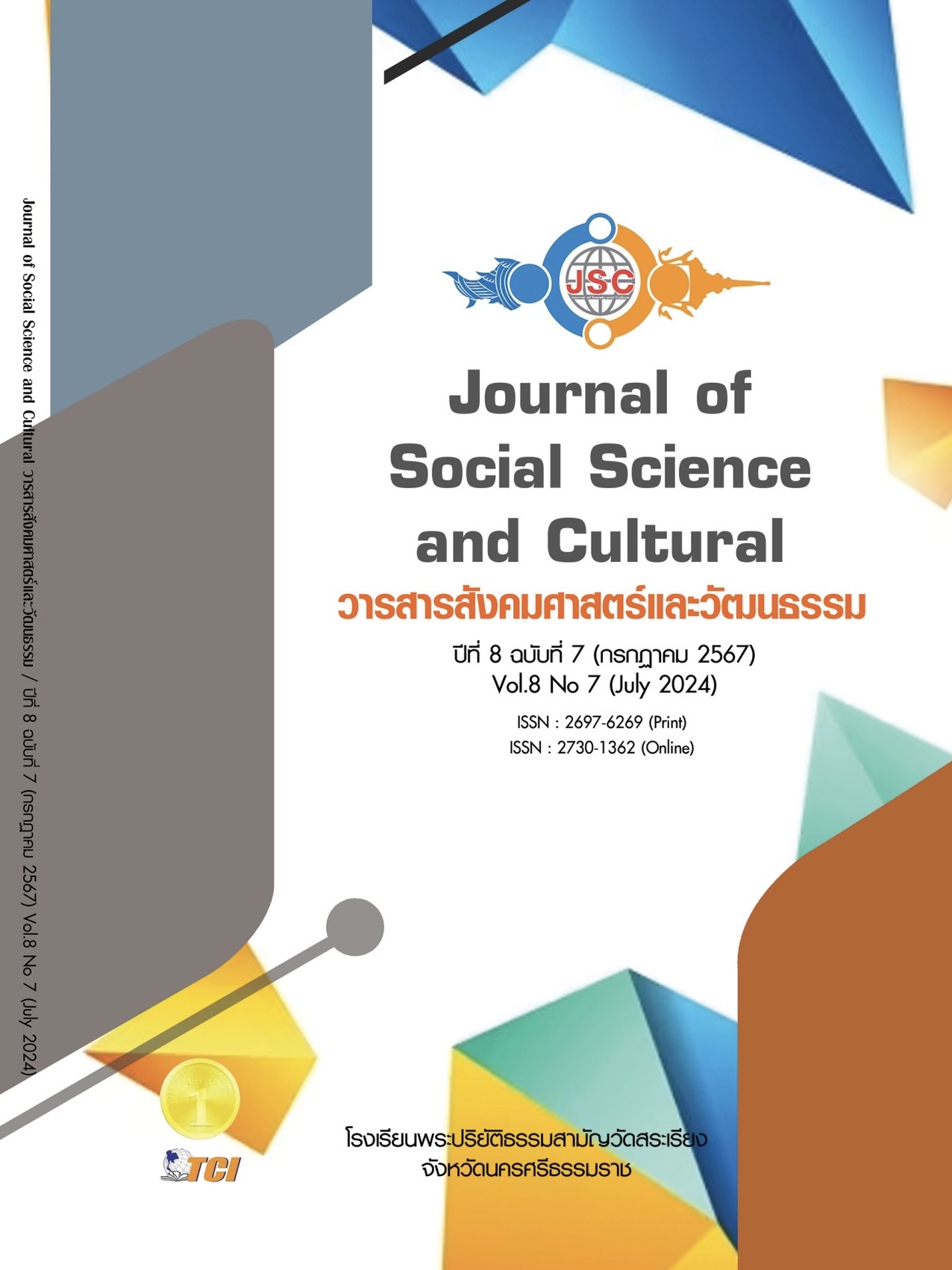CONTENT MARKETING MODEL FOR SERVICE BUSINESSESOF SMALL AND MEDIUM-SIZED ENTERPRISES
Main Article Content
Abstract
The objectives of this research were to 1) Study the data, goals, components, processes, and relevant factors in content marketing for service businesses of small and medium-sized enterprises (SMEs), 2) Develop a content marketing model for service businesses of SMEs, and 3) Evaluate the effectiveness of the content marketing model for service businesses of SMEs. The research employed a research and development approach. The first group of key informants consisted of 15 SMEs entrepreneurs and marketing professionals from the service sector. The second group comprised 20 target consumers who participated in in-depth interviews. Purposive sampling was used for selection. The research results were used to develop a content marketing model for SMEs service businesses. The draft model was evaluated by experts and implemented in three pilot businesses, including accommodation and law office businesses. It was then applied to three additional businesses. A water park, a fitness center, and a restaurant to assess its effectiveness. The findings revealed that entrepreneurs primarily aimed to create content for sales purposes. Common issues included lack of ideas, lack of understanding in content marketing, and problems with brand recognition among customers. Content factors influencing customers' purchasing decisions included images and videos. Effective content types included atmosphere depictions, actual service demonstrations, service introductions, reviews, and sales-focused content. The evaluation of the content marketing model for SMEs service businesses showed that entrepreneurs could work more easily and systematically. Target audience reach increased by 34.62%, 14.64%, and 11.19% respectively, while engagement increased by 19.06%, 16.26%, and 21.95% respectively.
Article Details
References
ณฐาพัชร์ วรพงศ์พัชร์ และคณะ. (2563). แนวทางการพัฒนาการตลาดดิจิทัลสำหรับกลุ่มวิสาหกิจชุมชนบ้านโฉนดชุมชนคลองโยง-ลานตากฟ้าจังหวัดนครปฐม. วารสารการบริหารนิติบุคคลและนวัตกรรมท้องถิ่น, 6(2), 115-127.
ประไพพิมพ์ สุธีวสินนนท์ และประสพชัย พสุนนท์. (2559). กลยุทธ์การเลือกตัวอย่างสำหรับการวิจัยเชิงคุณภาพ. วารสารปาริชาต มหาวิทยาลัยทักษิณ, 29(2), 31-48.
รัตน์มณี นิลละออ และคณะ. (2564). การตลาดเชิงเนื้อหาที่หยาบคายโดยอาศัยความพึงพอใจส่งผลต่อการตัดสินใจซื้อของผู้บริโภคบนสังคมออนไลน์ในประเทศไทย. วารสารบริหารธุรกิจมหาวิทยาลัยแม่โจ้, 3(1), 57-73.
วาโร เพ็งสวัสดิ์. (2552). การวิจัยและพัฒนา (Research and Development). วารสารมหาวิทยาลัยราชภัฏสกลนคร, 1(2), 1-12.
ศิริลักษณ์ กิจโสภา และชวนชื่น อัคคะวณิชชา. (2567). บทบาทการตลาดสื่อสังคมออนไลน์ และประสบการณ์ ตราสินค้าที่ส่งผลต่อความภักดีในตราสินค้าผ่านความผูกพันของลูกค้าและคุณค่าตราสินค้าของ ผลิตภัณฑ์บะหมี่/ก๋วยเตี๋ยวกึ่งสำเร็จรูป. วารสารมหาวิทยาลัยคริสเตียน, 30(1), 77-94.
สาวิตรี พรหมสิทธิ์. (2562). รูปแบบการทำการตลาดเชิงเนื้อหาของเฟซบุ๊กแฟนเพจวงใน. วารสารการสื่อสารมหาวิทยาลัยราชภัฏเชียงราย, 3(1), 22-44.
สำนักงานส่งเสริมวิสาหกิจขนาดกลางและขนาดย่อม. (2564). รายงานประจำปี 2564. กรุงเทพมหานคร: วิชั่นพรีเพรส.
อนันตพร พุทธัสสะ. (2563). การพัฒนากลยุทธ์การส่งเสริมการตลาดดิจิทัลเพื่อสร้างความได้เปรียบในการแข่งขันของกลุ่มวิสาหกิจชุมชนในจังหวัดกาฬสินธุ์. วารสารวิชาการเทคโนโลยีการจัดการ, 2(1), 12-21.
Kemp, S. (2023). Digital 2023 Global Overview Report. Retrieved August 6 , 2023, from https://wearesocial.com//wp-content/uploads/2023/03/Digital-2023-Global-Overview-Report.
Onwuegbuzie, A. & Leech, N. L. (2007). Sampling designs in qualitative research: Making the sampling process more public. The Qualitative Report, 12(2), 238-254.


